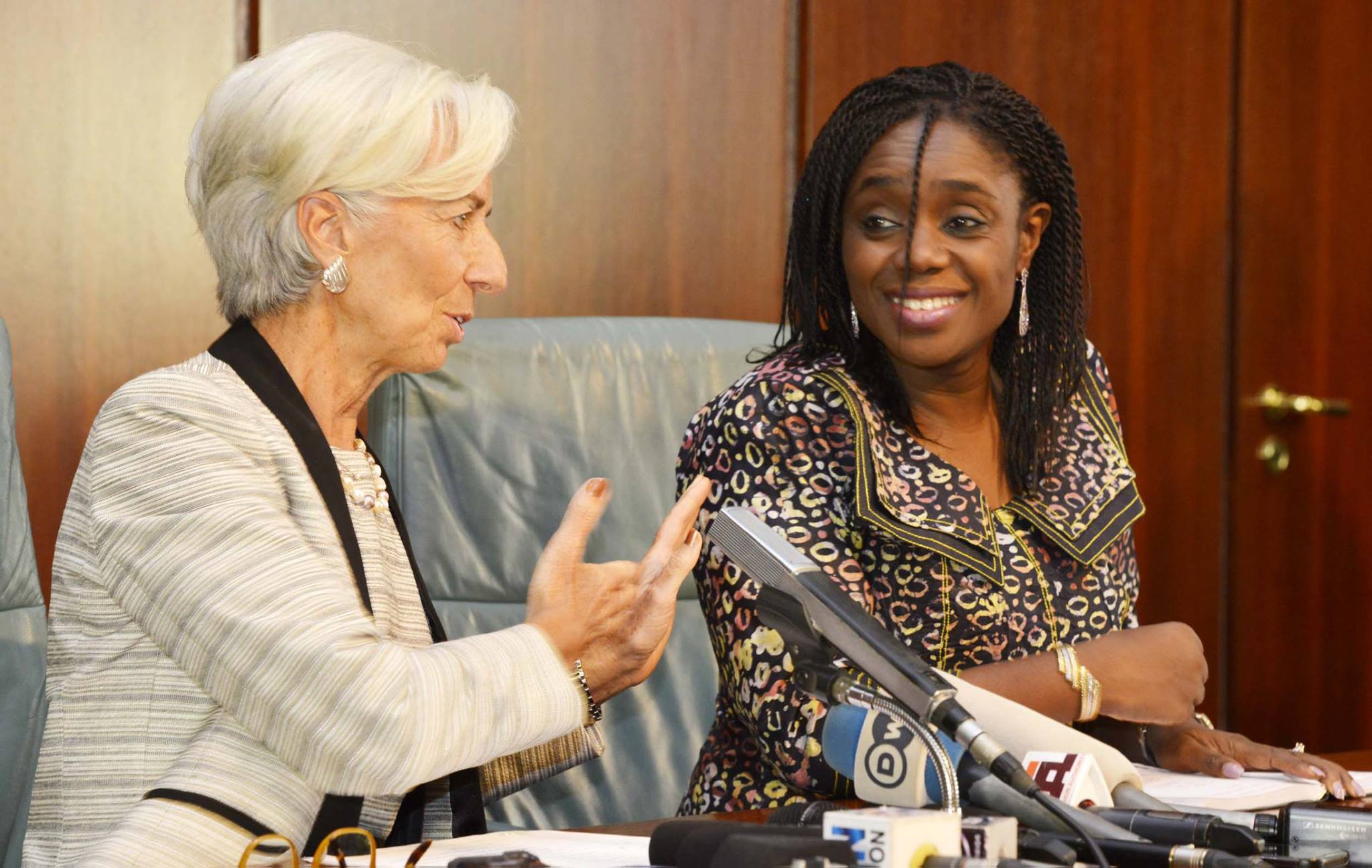The broad-based slowdown in sub-Saharan Africa is easing, and growth is expected to pick up to 2.6 percent in 2017 from last year’s 1.4 percent, the IMF said in its latest Regional Economic Outlook for sub-Saharan Africa.
The outlook specifically cited recovery in oil production and a good harvest in Nigeria, as well as the easing of tensions in the Niger Delta as accounting for more than half of the additional growth.

Christine Lagarde, IMF’s head and Kemi Adeosun, Nigeria’s Finance Minister, during IMF’s visit to Nigeria
“The policy environment has started to improve. Fiscal deficits are stabilizing and current account deficits are narrowing, partly reflecting a slight rebound in commodity prices. The global environment has also been supportive, with strengthening growth momentum in the largest economies, commodity prices off their troughs, and improved access for sub-Saharan African economies to international capital markets,” the IMF said.
It noted that while a third of sub-Saharan African countries continue to grow at about 5 percent, income per capita will barely increase in the region, adding that in 12 of the 45 sub-Saharan African countries, home to about 40 percent of the region’s population, or 400 million people, per capita incomes are expected to decline.
The Bretton Wood institution said beyond 2017, growth in the region is expected at about 3½ percent below the five percent mark achieved in the first half of the decade.
However, the multilateral agency said vulnerabilities have increased in the region, notably, due to rising public debt, financial sector strains and low external buffers.
“Public debt is high not only in oil exporting countries but in many fast-growing economies as well. At the end of 2016, public debt exceeded 50 percent of GDP in nearly half of the sub-Saharan African countries. Debt servicing costs are also becoming a burden, especially in oil-producing countries. In Angola, Gabon, and Nigeria they absorb more than 60 percent of government revenues.
“Driving this increase in debt is a combination of large fiscal deficits, a slowdown in growth, and in some countries, exchange rate depreciations.”
On back of reforms, Nigeria leaps 24 places to 145 in World Bank’s Ease of Doing Business rankings
It said increasingly deficits are being financed by domestic banks, which constrain the availability of credit to the private sector, adding that in many countries, banks’ liquidity and solvency indicators have deteriorated, and non-performing loans have increased.
“Despite some narrowing in current account deficits, international reserves are now below adequacy levels in many countries, especially those with fixed exchange rate regimes.
These vulnerabilities are being compounded by political uncertainty resulting in a lack of clarity about future direction of economic policy, notably, in some of the region’s largest economies such as Nigeria or South Africa. This is weighing on consumer and investor confidence,” it noted.
To this end, the IMF reeled out key economic policy priorities for the region including measured fiscal adjustment that limits the adverse effect on growth, while preserving fiscal space for priority spending; a focus on raising revenues and making room for outlays on health and education, and other spending that have positive social impact and long-term growth effects; and the need to address infrastructure deficits, as well as economic diversification.
However, the report says any further postponement of fiscal adjustments will likely increase public debt above sustainable levels given the recent pace of debt accumulation.


